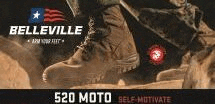IWI US opens up position for Director of Sales to lead sales strategy for continued sales growth through existing and new sales channels.

Harrisburg, Pa. (November 2017) – IWI US, Inc., a subsidiary of Israel Weapon Industries (IWI) Ltd., announces that the position of Director of Sales is open to qualified candidates. As the Director of Sales, the candidate’s role will be to create, define, establish and execute the sales strategy for continued sales growth through existing and new sales channels. IWI US is looking for a leader who will continue to strengthen and drive the IWI brand and provide increased sales and profitability. This individual will report to the CEO and will be responsible for a number of tasks.
“The position of Director of Sales for IWI US is a key position within the company, requiring leadership and professionalism coupled with industry and business experience, in order to take IWI US to the next level,” Casey Flack, CEO of IWI US stated. “This individual will work closely with me to forecast sales and continue to grow our market share in the commercial and law enforcement markets.”
Any candidate must have a Bachelor’s Degree in business, business management, marketing or related field and ten years of industry sales experience with at least five years managing a sales team. The candidate must have a firm understanding of the firearms market and trends, have an existing network of industry contacts and excellent interpersonal skills. Experience with commercial, law enforcement and military sales is necessary and international experience will be considered a plus. The candidate must demonstrate strong process development and leadership skills while developing effective working relationships with staff, peers and industry colleagues/contacts in a team environment.
The Director of Sales for IWI US will also be required to travel an estimated 30 percent or more of the year with international travel included. Additionally, the candidate will be required to manage, direct and monitor the activities of all sales and marketing personnel, prepare sales and marketing budgets, sales forecasts, allocate customer shipments, attend industry trade shows and establish relationships with industry partners, customers and retail channels. As part of the Director of Sales promotional activities, he/she must also manage all aspects of trade show activities and work with industry media and outlets.
Please submit all resumes and cover letters to careers@iwi.us.
To learn more about IWI US, please visit www.iwi.us.


























































































































